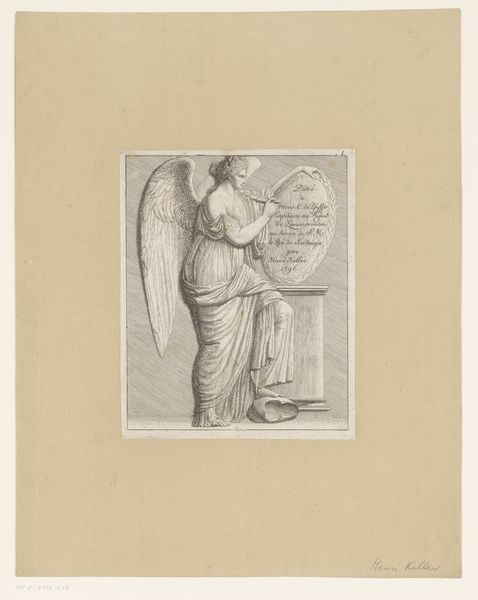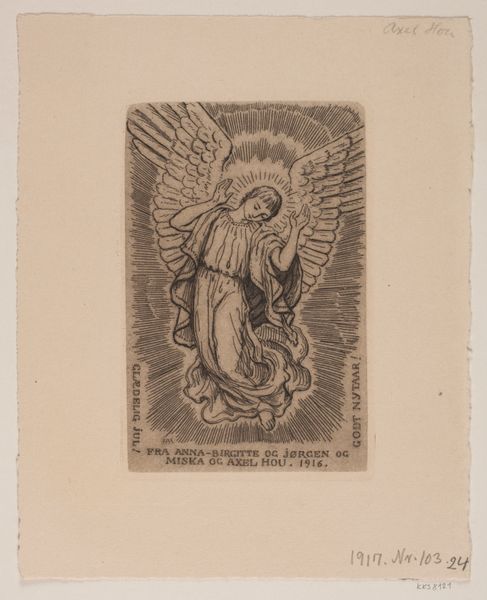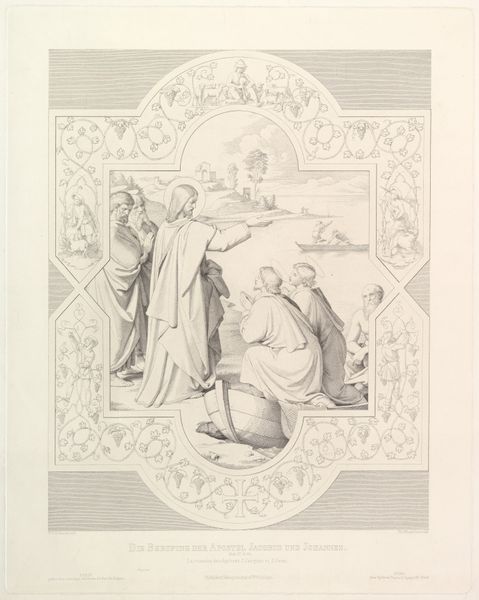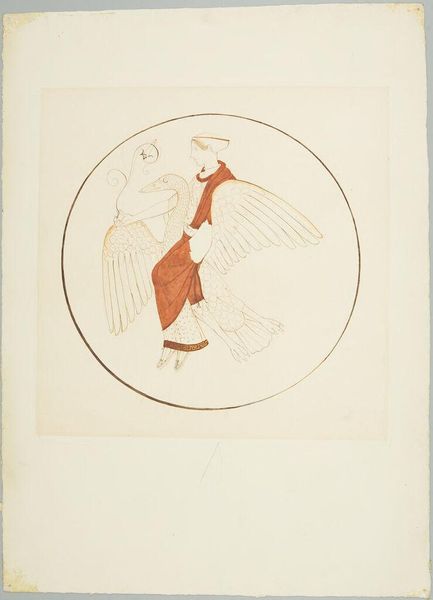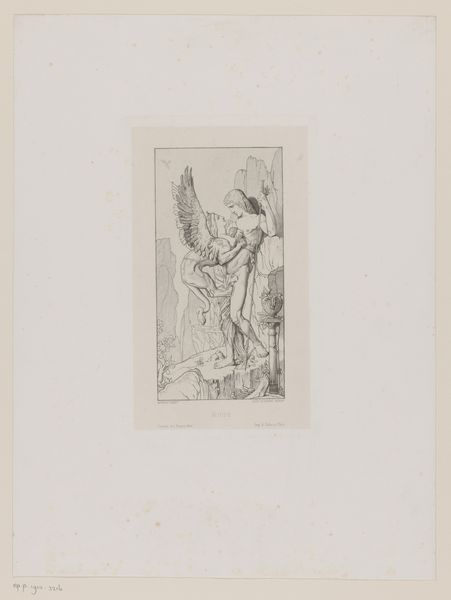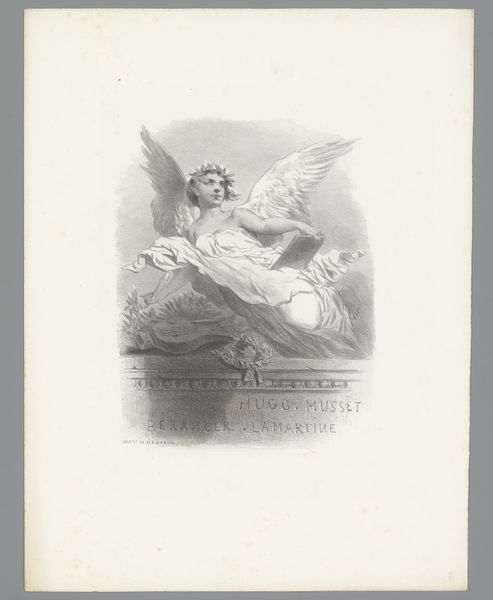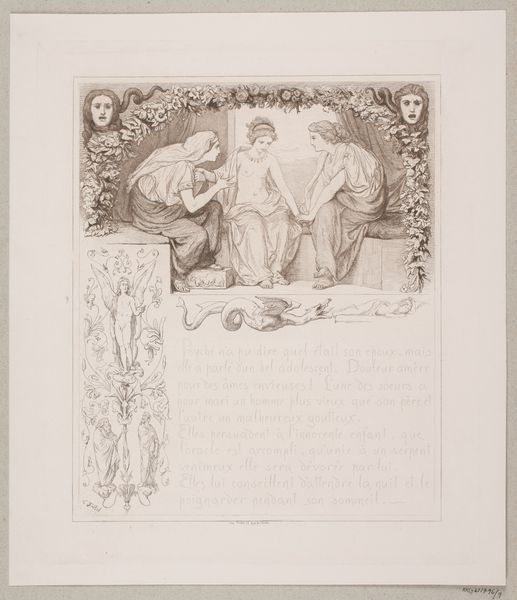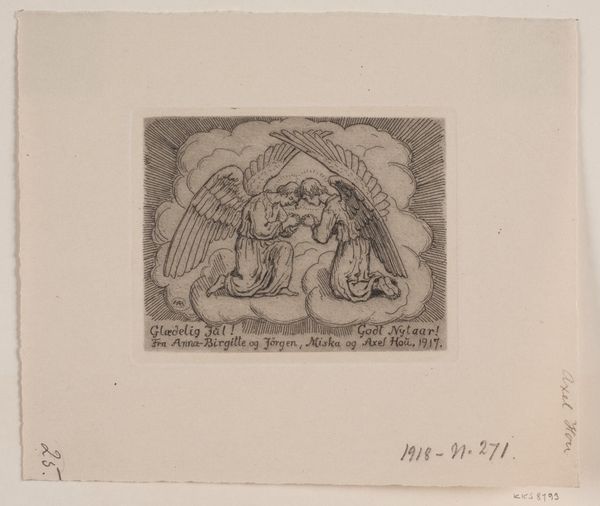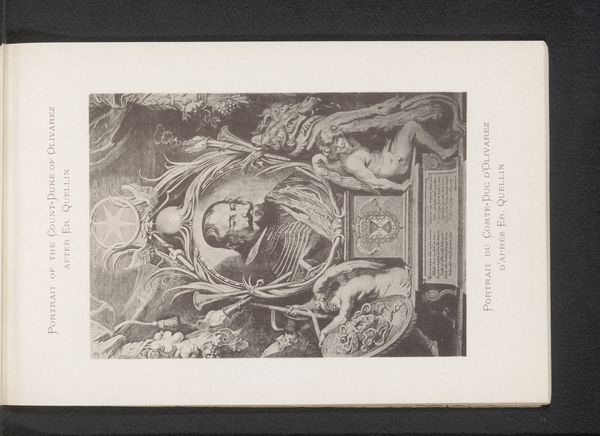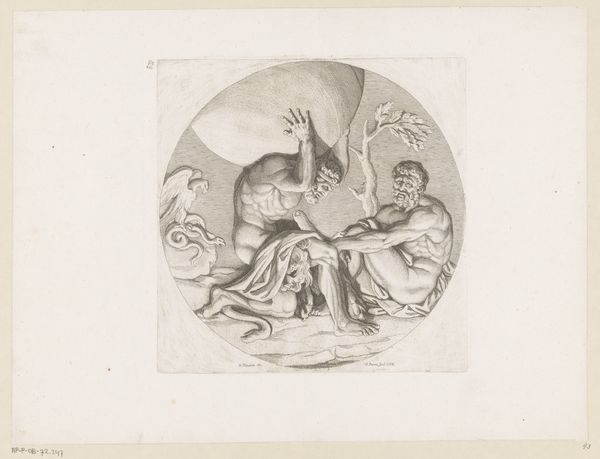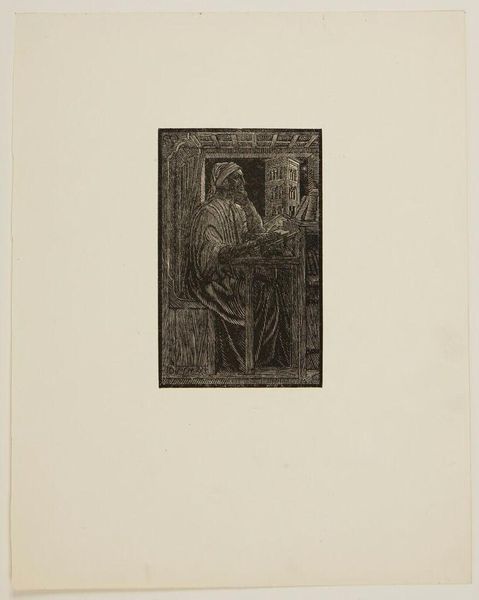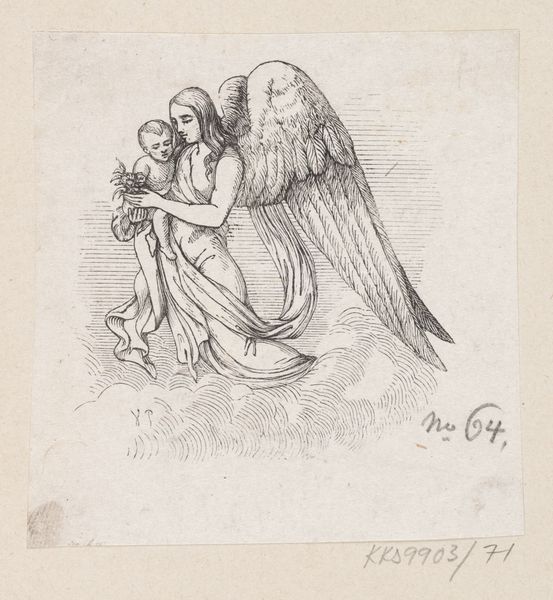
print, etching
#
portrait
# print
#
etching
#
fantasy-art
#
symbolism
#
genre-painting
Dimensions: 128 mm (height) x 183 mm (width) (Plademål)
Editor: Here we have Axel Hou’s “Christmas and New Year Card” from 1913, an etching on paper currently residing in the Statens Museum for Kunst. There's a melancholic charm about this angel playing the violin, such fine, intricate lines etched into the paper. What strikes you when you look at it? Curator: For me, it's the interplay between the ethereal subject matter and the very material process of its creation that's most compelling. Look at the etched lines – they were physically incised, weren’t they? A copper plate, acid, human labor all played their parts in producing this "heavenly" image. Editor: Absolutely! I was also thinking about how the act of reproduction changes the object itself. It was originally made as a greeting card, meaning it was intended to be shared widely and circulated among people. Curator: Precisely! We have this original, housed in a museum. Consider the socio-economic context – the production and distribution of these cards became a seasonal industry. These weren't just quaint objects but commodities produced through specialized labor and meant for consumption. Notice, even the symbolism - angels, instruments - became goods circulating in this industrialized holiday market. Editor: So, by looking closely at the materiality and mode of production, we can unravel deeper social and economic realities embedded within even seemingly innocent holiday art? Curator: Exactly! How the making of this object affected its circulation, how this angel become less divine and more industrial – the labor and the exchange inherent in the gift. We understand that the true ‘art’ is located less in its apparent visual appeal and more so within the web of relationships surrounding it. Editor: That really makes me rethink how I initially perceived the artwork. It's more than just a charming greeting card; it's a product of its time, reflecting social and economic shifts. Curator: Indeed. Thinking materially unveils deeper contexts of an artwork's production, and reminds us of art's vital connections with society.
Comments
No comments
Be the first to comment and join the conversation on the ultimate creative platform.
